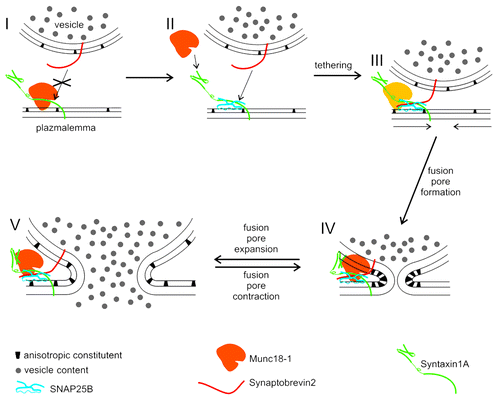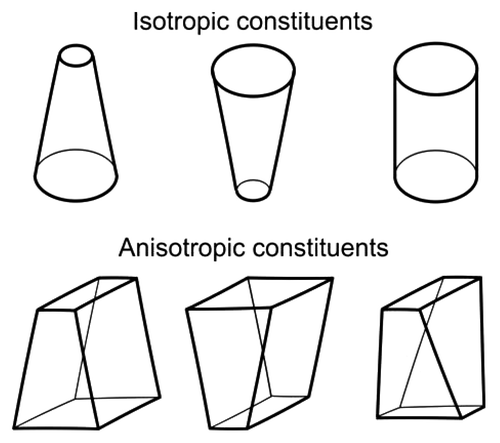Figures & data
Figure 1. A model describing the role of Munc18–1, SNARE proteins and anisotropic constituents in vesicle fusion. Munc18–1 binds Syntaxin1A in a closed conformation, which prevents the formation of Synaptobrevin2–Syntaxin1A trans interaction (I). Synaptobrevin2, however, can interact with cis complex of Syntaxin1A and SNAP25 to form the ternary SNARE complex (II, III). The ternary SNARE complex enables stable tethering of vesicles to the plasma membrane, either in presence or absence (thus lighter appearance) of Munc18–1 (III). The fusion of vesicle and plasma membranes is facilitated by the effect of Synaptotagmin1 (not shown in the Fig.) on the rearrangement of anisotopic constituents (III, arrows) (Lai et al., 2011). Initially, the fusion pore is narrow and stable (IV), due to the locally high concentration of anisotropic constituents (Jorgačevski et al., 2010). Fusion pore expansion and contraction (IV, V) are affected by the presence of Munc18–1 (Jorgačevski et al., 2011), possibly also by modulating the dissipation of anisotropic constituents (V).

